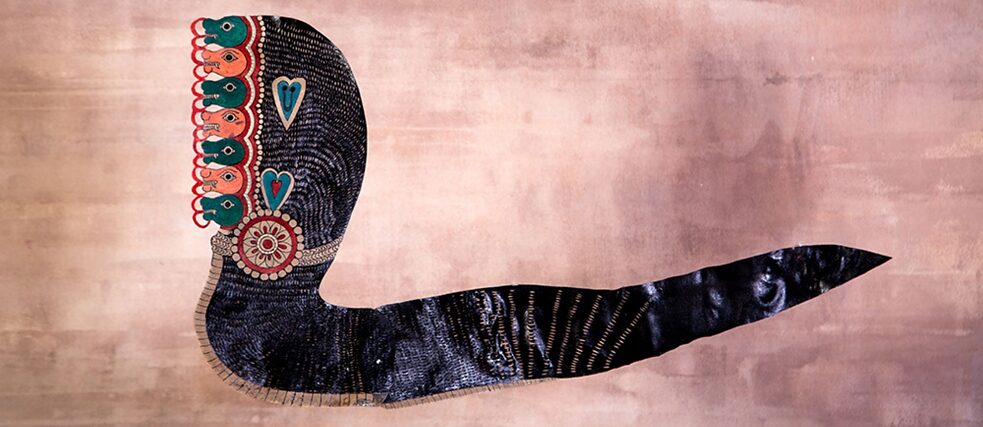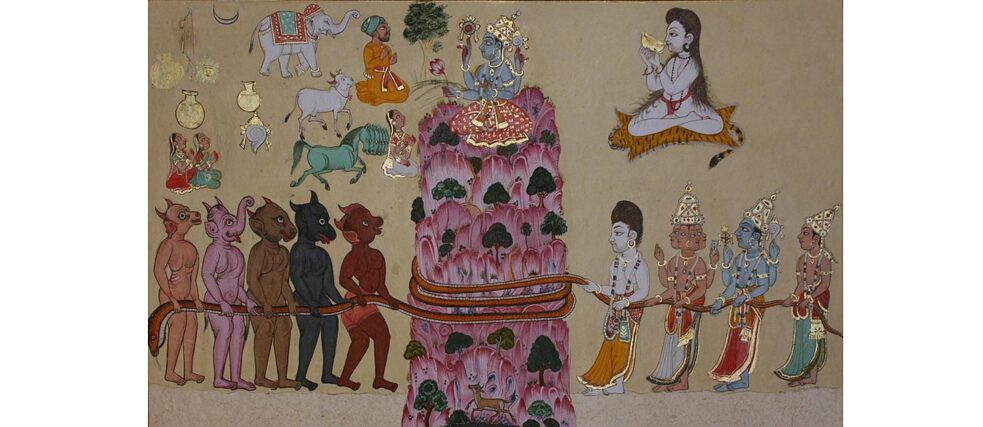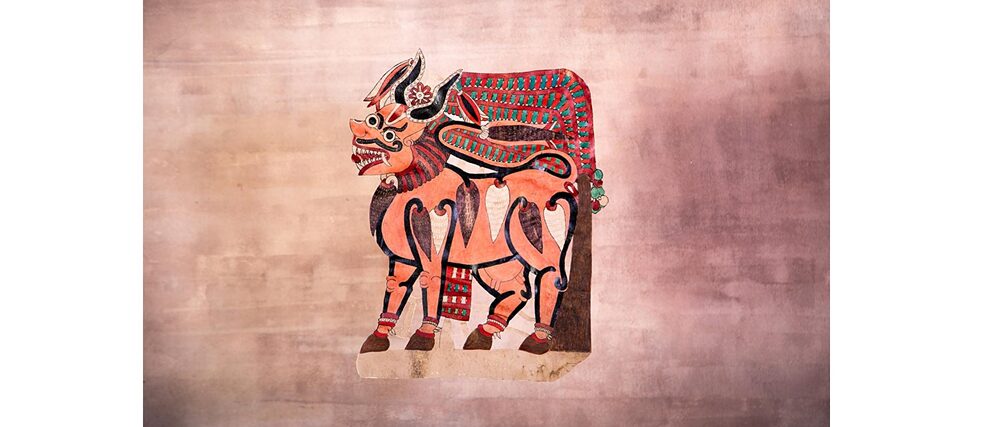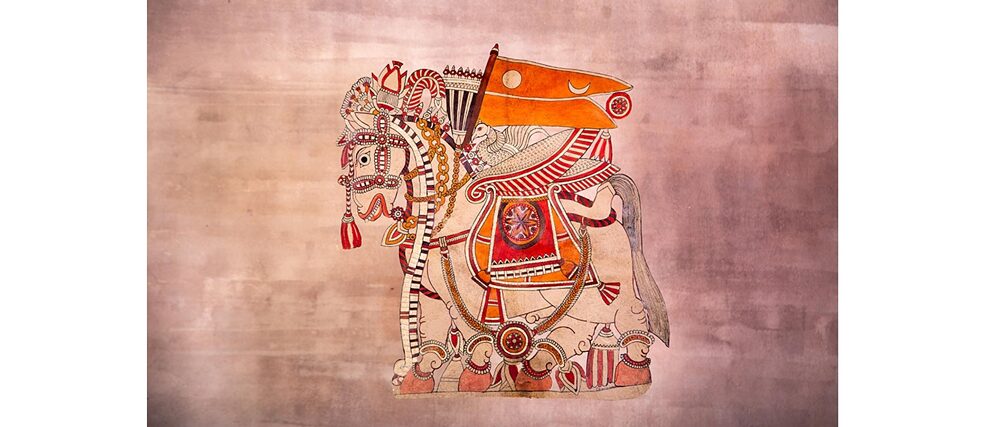Oral Storytelling
The Many Forms of Indian Shadow Puppetry

Traditional performing art forms are very importantly rooted in India's cultural history, social practices and linguistic contexts. One such form is Shadow puppetry, characterized by narratives being passed down from one generation to the next within the family or kin over a few hundred or even a few thousand years.
By Anurupa Roy
There is an ancient Greek story where the gods were debating about where to hide the greatest secret to life, the ultimate wisdom. Some suggested the highest mountain, but others argued that humans would eventually climb it, some then suggested the deepest ocean but that was rejected. Eventually, humans would reach there too. Finally, the gods decided to hide it in plain sight, within the human’s own mind - his dreams. I believe, that epic narratives are also where the gods placed this wisdom.
The traditional puppet theatre is characterized by such narratives being passed down from one generation to the next within the family or kin over a few hundred or even a few thousand years. Each generation then adds something of their own and passes it on, further distilling, refining and adapting it to changing audiences and patrons. Thus, tradition is an ever-changing phenomenon, it is not something frozen in time. The day it becomes static, it starts to die. Traditional performing art forms are very importantly rooted in their cultural history, social practices and linguistic contexts. These are complex and nuanced biospheres. The evolution of Shadow puppetry and the role of the puppeteer in India is a living testimonial of this complexity.
The Southern states namely Kerala, Karnataka, Tamil Nadu and Andhra Pradesh and the Eastern state of Orissa have their own distinct type of shadow puppetry."
Anurupa Roy
The most important aspect of traditional puppetry is its narrative context, which is deeply rooted in the oral versions of epics like the Ramayana and the Mahabharata, stories from the Puranas and regional folklore. These narratives determine the nature of the performances (dialogues, stylizations in speech, in music and songs) the design of the puppets (colour, shape, size, material used), the aesthetic of the form and its link with the audience. The story is thus the core and the puppets mostly illustrate the narrative. The aesthetic often resembles that of the local sculptures, paintings and other performing arts. These are inextricably linked. Traditional audiences are already familiar with the story, the songs, dialogues and jokes too. The role of the puppeteer was and still is more than that of a mere entertainer. S/he is the Shaman, healer, storyteller, local wise wo/man, the holder of a collective history, drawing parallels between the local politics and the epics, linking philosophy and social realities. His/her deep knowledge of the oral narrative on the one hand and socio-cultural realities on the other helps him/her to negotiate the space between the audience and the mythical characters. In my opinion, it is him/her, the carrier of the narrative, and not the puppets, that are central to the performance.
The Mahabharata and Ramayana are often looked at as linear texts written by one author in a particular period. The stories have actually been passed on over a few centuries and have several authors, interpolations and versions. A ‘monolithic’ view of these texts diminishes their depth and unimaginable richness. The Ramayana alone has 300 versions! The oral versions of the epics are illustrated by the puppet performances. The performing arts are a major vessel to carry these repositories of wisdom. To cite a simple example, in the written versions of the Ramayana we mostly hear of one Ravana or the ten-headed king of Lanka but in the oral narrative, we hear of six different Ravanas, Dash-Kantha- the ten-headed, Shata-Kantha the hundred-headed Ravanas, Mahi-Ravana and Ahi Ravana, the two brothers, Chayya Ravana and Maya Ravana as holograms of the ten-headed Ravana. Even the story of the most commonly known ten-headed Ravana has different backstories in each version.
Shadow Puppetry in Karnataka
Karnataka - Togalu Gombeyata – The shadows have vibrant colours, traditionally these were black, red and white. These have three kinds of puppets within the shadow form. The composite image puppets (Jamgat Bavli) where one image tells a whole story or a series of images tell a story like in a comic book. The single image/character puppet (Ikpat Bavli) does not have any articulation and the single character with joints for articulation (Haathpheruthali Bavli). The puppeteers belong to the Sillakayata community, originally a hunting-gathering tribe that made and performed with leather shadow puppets. In their stories, they appear as “Sillakayata” the clown and trace their mythical origins as the royal guards of Rama. The story goes that Surpanakha, the sister of the defeated king Ravana, comes to Sita in disguise, begging her to engage her as a ladies’ maid. Sita engages her and in time she becomes close to the queen by telling her stories. One day she asks Sita if she remembers Ravana, and Sita tells her that she had never seen Ravana. Surpanakha, keeps persisting “O queen, you must have seen him sometime?”, “Didn’t he visit you everyday?”, “How could you have never seen him”, so Sita succumbs and says that she has once seen his toe. On Surpanakha’s insistence, Sita draws this toe from memory onto a large piece of paper. Surpanakha, an experienced enchantress, then draws the rest of the figure of her brother and brings it to life. This was/is Chhaya Ravana, a shadow Ravana, bent on avenging his death. He thus hides under the bed. When Ram returns to his bed chamber to rest, he pops out to avenge himself but the guards fight and defeat him. He is then cut up into small parts and strung together as a puppet. Thus are born shadow puppets.Shadow Puppetry in Tamil Nadu
In Tamil Nadu, the opaque shadow puppet, called Thol Bommalata, becomes bigger and more colourful. ‘Thol’ is shadow and ‘Bomba’ or ‘Gomba’ is a doll and ‘latam’ is dance, so literally translated, it is shadow-doll-dance. The puppets are usually individual characters and one puppeteer plays all the puppets by changing voices for all the characters, sings and plays several instruments. Sometimes a harmonium player also assists him and he may have an assistant to hand him the puppets. The average show has more than two puppets on stage at a time so quick changes characterize the shows. Animal characters and numerous jesters keep the shows very contemporary and fun.Shadow Puppetry in Andhra Pradesh
Tolu Bommalatam, Andhra Pradesh, look similar to their Tamil cousins, except they are the largest shadow puppets in the family. Lankini, the demoness guarding the island of Lanka can be four meters!! Most puppets are between 1.5-2.5 meters and one puppeteer plays one character at a time. The puppets have many articulations and so the legs, arms, head and sometimes even the waist moves. Backstage, balanced on a wooden plank, the puppeteer dances along with his puppet, setting the rhythm and enabling the puppet’s legs to move without actually touching them. In this version based on the Molla, Kamba and Adbhuta Ramayana,one can hear the story of Ahi-Ravana and Mahi-Ravana , two brothers and childhood classmates of the king of Lanka. He tricks them into joining the war against Ram. They kidnap Ram and Lakshman and Hanuman must follow them to the nether world to rescue them.Shadow Puppetry in Orissa
The Ravanchayya, of Orissa, like Kerala, has black and white puppets only. These are small puppets and use tricks like small versions of the same character to show long-distance and large versions to show nearness. This is based on the Bichitra Ramayana written by Bishwanath Khuntia for theatrical performances.I hope that in the near future we will see more acknowledgement of this art- form in India. Training opportunities, that train both generational puppeteers from families that practice traditional forms and new artists from a non-traditional background to be skilled professionals in the arts of puppetry, could be the way forward. Exposures for audiences besides the traditional audience might snowball into a deeper questioning of the stereotypes that surround the art form. Maybe this will increase the self-esteem of the puppeteer and encourage the children of generational puppeteers to continue to practice their art and also be free to innovate. With projects like this virtual library maybe finally, the “dying art” label will be challenged by an increased digital presence of Indian traditional puppet theatre. And maybe it will finally bring in its wake policy changes. But it is definite that this will lead to new discourses around puppet theatre and a strong stimulus for innovation in all puppet theatre in India.


